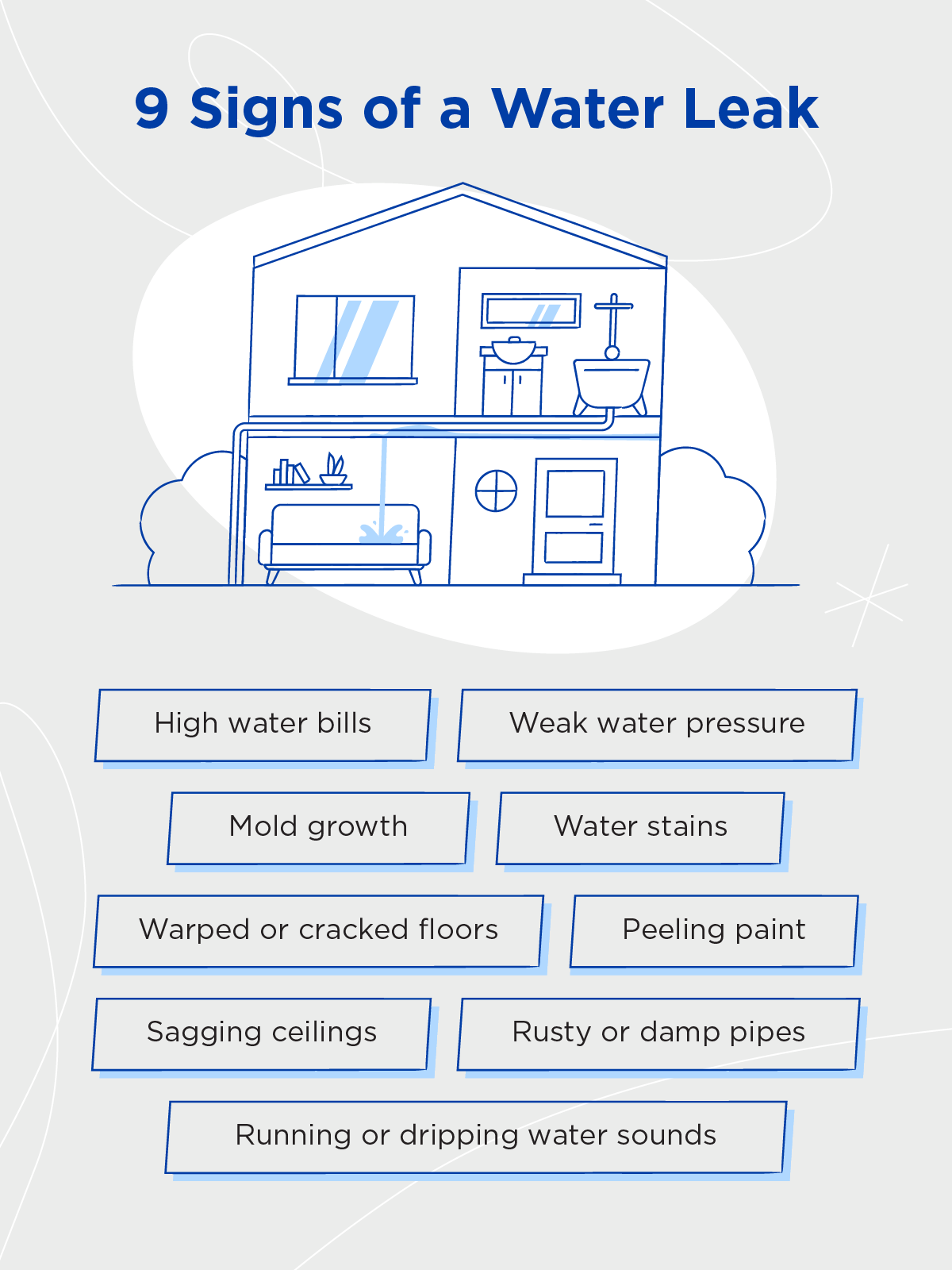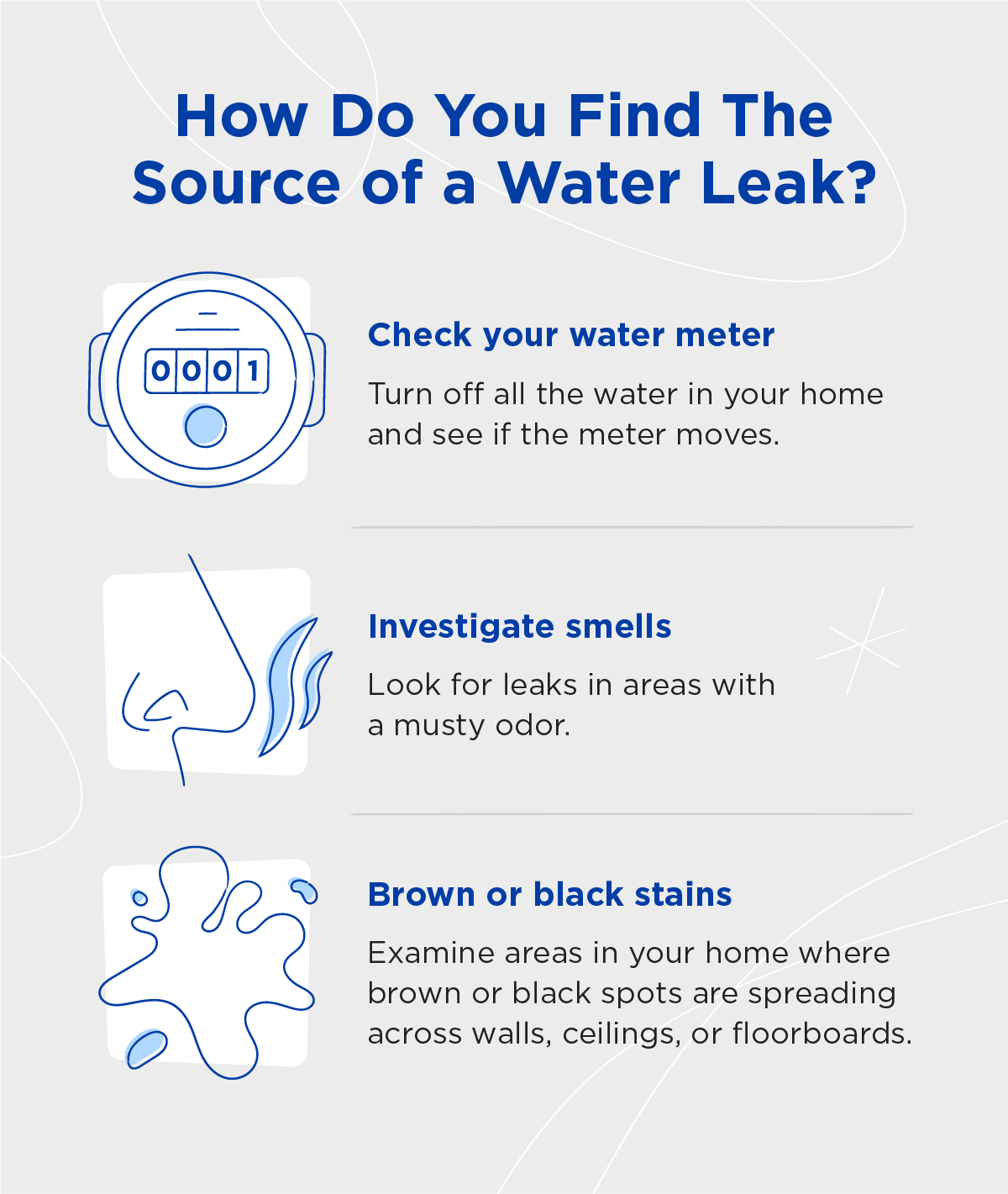
Did you know that the average household leaks 10,000 gallons of water annually? Wasting this much water regularly can have major financial and environmental consequences. Noticing these signs early enough will give you plenty of time to prevent extensive water damage.
We’ll discuss nine common signs of a water leak in your home, six reasons why they occur, and how Mr. Rooter Plumbing®’s leak detection services can help.
1. Increased Water Bills
High water bills can be a sign of hidden leaks in your plumbing system. Average water bills vary from state to state, but if your payment totals over $100 a month, it's worth investigating for leaks.
2. Low Water Pressure
Suddenly encountering low water pressure when you try to turn on a faucet can indicate a leak elsewhere. This issue can be caused by a leak stealing the flow of water, which could originate in an entirely different part of your home.
3. Mold Growth and Musty Odor
Mold and mildew thrive in damp, humid environments, which can produce strong odors in your home and indicate water leakage. Check your toilet for leaks if you consistently notice a musty smell in your bathroom even after you clean it.
4. Visible Water Stains
Discoloration on your ceilings or walls may be a sign of a leak above or behind the surface. These discolored spots appear when water leaks out of a pipe and then evaporates, staining your walls. It’s similar to the process that occurs when you spill water on a piece of paper that then dries in the sun.
Brown or black patches that gradually grow in size are telltale signs of water damage, especially if you spot them on the ceiling.
5. Damage on Floors
Warping, cracking, or soft spots on your floors, especially near water sources, are clear signs of a water leak in your home. Water can damage your floorboards and ruin your carpets if left untreated. Contact a service professional to fix the leak and prevent future damage.
6. Peeling Paint
Moisture buildup can cause paint to peel or wallpaper to blister. The extent of the damage can clue you in to whether it’s normal wear and tear or water damage due to a leak.
Check the humidity levels in the rooms where you find peeling paint. Higher humidity may suggest increased moisture due to a leak.

7. Droopy Ceilings
Water can be very heavy as it accumulates in one space. A sagging ceiling can indicate significant water damage that needs immediate attention. Without taking action, your ceiling is at risk of falling out in the near future.
Pay extra attention if you notice water leaking through the ceiling. It might start as a few sparse drips before giving way to streams of leaking water. Call Mr. Rooter Plumbing to get 24/7 live support if you’re dealing with a leaky ceiling.
8. Running Water Sounds
When you turn on a faucet, you should only hear the sound of running water until you twist the valve off. Hearing dripping or hissing noises when no water is running could mean there’s a leak behind the walls or under the floorboards.
9. Rusty Pipes
Water naturally erodes metal over time, which is why the plumbing systems in older buildings might have limited functionality. Pay special attention to older pipes with rust and corrosion when investigating a leak.
What Are the Most Common Sources of Water Leaks in a Home?

One challenge you might face while searching for signs of a water leak in your home is pinpointing where the issue originated. Some of the most common sources of leaks in a home include:
- Faucets: Heightened water pressure and corrosion can cause water leakage, so look out for dripping faucets.
- Toilets: Water can leak out of your toilet’s bowl, water supply line, and even the flapper.
- Showerheads: Showerheads can lead to leaks if the hose deteriorates and the water pressure climbs too high.
- Water heaters: Water heaters that have seen many years of use are highly susceptible to leaking water.
- Outdoor irrigation systems: Sprinkler systems can lead to an underground water leak.
- Appliances: Appliances like dishwashers or fridges can leak water in your home.
Signs of a Water Leak FAQ
If you find yourself unexpectedly dealing with a leak, you might have questions. Here are answers to some of the most common concerns we’ve encountered.
What is the most common source of a water leak in a person's house?
Toilets are the most common source of water leaks because they can be compromised in many different ways. Water might leak from the tank due to a loose flapper, the base, or the water supply line.
How long can a water leak go undetected?
A water leak can go unnoticed for multiple years or even decades based on where it occurs. Underground leaks are very hard to detect through sight or sound alone.
How do I know if my underground pipes are leaking?
There are a few ways to find an underground water leak, chiefly by looking for the following signs:
- Damp patches of soil in your yard
- Listening for the sound of hissing water
- Sinkholes or potholes suddenly appearing in one area
- Using a ground-penetrating radar (GPR) tool to detect hidden leaks
As a leak continues to go undetected, it will increasingly pose a greater risk to your home. Routinely checking for telltale signs of a leak can save you a lot of money and stress in the long run.
Fix Water Leaks With Mr. Rooter Plumbing
Learning how to find a leak in your house can save you plenty of money and stress later on. If you notice any signs of a water leak in your home, contact Mr. Rooter Plumbing. Our service professionals have expertise in everything from drain repair to toilet repair and replacement.

